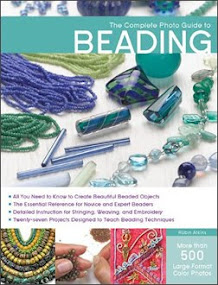 |
| This is one of the 61 blocks. |
No way! As I played with the arrangement, it was obvious that the results were "muddy," confusing, and "busy" from close up... and boring from a distance.
So then, I spaced them apart, like in a photo album, not touching, something like this:
Nope. That didn't work either... still too busy, muddy, and boring from a distance. Akkk, what to do???? Sleep on it!
Next morning, the solution came to me upon waking! Sew them together in clusters, and mount the clusters on a back-quilt!
To see how the idea would work, I grouped the blocks on a piece of fabric from my stash, each cluster representing a whole (or segment of a) trip. This is how it looked:
The idea of clustering worked! Yay! Instead of 61 different things to view, there were now only a dozen or so. And from a distance, the shapes of the clusters against the pathway of background color made an interesting pattern.
What color would the back-quilt be, and how would the clusters be attached, I wondered? After stitching the clusters together, I took them to the quilt shops in Anacortes to find the a fabric for the back-quilt. It had to be a read-as-solid print, one that wouldn't distract from the clusters, in a color that contrasted in value with the over-all value of the clusters. I soon found that either too much or too little value contrast was not good. Two green prints and a light coral print came home with me as possibilities.
That evening, after trying all three of them, I decided to go with one of the green prints. The clusters seemed to "pop" nicely on it!
However, the next morning, when I viewed it in daylight, the green seemed just too cool. My travels were warm (at heart) and wonderful... I wanted the quilt to have visual warmth. Back to the drawing board. I made a "help!" call to Lunnette, my quilting friend and travel companion on one of the trips, who came over and agreed that the green was good... except for the important consideration of "warmth." While trying various possible fabrics, she happened to mention that red is sometimes considered a neutral color, which made me look at the red/rose fabrics in my stash with a different eye. When we put the clusters on a piece of medium-rose batik, we both knew instantly we had found the back-quilt fabric!!! Whooo-hooo!
Next was the matter of how to construct the back-quilt and how to attach the clusters. I made all the mini-decisions on an "as needed" basis. Here they are in order:
- quilt the names of the people I spent time with on these travels on the back-quilt (picture shows one quilted line, and two lines written in chalk to be quilted)
- use the same color thread as the fabric to quilt the names, so they are there, but do not distract the viewer from the clusters of blocks
- make the edges of the back-quilt irregular
- bind the back-quilt edges, and then whip stitch the binding with pearl cotton, the same as the individual blocks
- sew the clusters onto the back-quilt on the top edge only, allowing the cluster to be lifted to see the backs of the blocks (all different fabrics, carefully chosen for the subject of each block), and giving a place to sew a label identifying the location, people, etc. in the photos of that cluster
- use a double row of hand-stitching along the top of each cluster to support the weight
- make a small identifying label for each cluster
- sew a small, and very personal, embellishment on the back of each cluster, something I know is there but that most people won't see (or know the meaning of if they did see it)
What did I learned making this quilt? Whew... probably more than you'd want to read... The most important thing was a reinforcement of the "just do it" approach to original art, an approach that works so well for me with my bead embroidery. Not stressing over all the decisions, not needing to have all the answers in hand before starting, is a hugely enabling gift to the creative process!

























OMG! Robin! It's soo touching that you mentioned my name on your quilt!! Thank you!! <3
ReplyDeleteThis comment has been removed by the author.
DeleteOf course your name is on the quilt, Ildiko! You are in one of the photos too! Meeting you in person (after all the emails and FB messages) was one of the great joys of the trip.
DeleteA beautiful representation, of a wonderful trip!
ReplyDeleteWhat a wonderful project!
ReplyDeleteRobin, I love "not needing to have all the answers in hand before starting". That makes each project an engaging adventure! Thanks for sharing!
ReplyDeleteMe too, Vicki... it's good to "voice the thought" in writing!
DeleteThe quilt turned out gorgeous! what a unique way to keep those memores...
ReplyDeleteWhat a keepsake! This turned out wonderful. The finishing touch that made it perfect was that thin colorful edging peeking all around, with the embroidery matching the little quilts. Oh how I'd love to see this one in person! And I really enjoyed following in your thought processes; that is so educational and interesting.
ReplyDeleteThanks, Retta! I get the same from your posts... so we're even! :)
DeleteIt's glorious very inspiring as well.
ReplyDeleteThanks, everyone for your comments! It's great to know you still come here to read my posts, and the support and encouragement is always welcome!!!
ReplyDelete